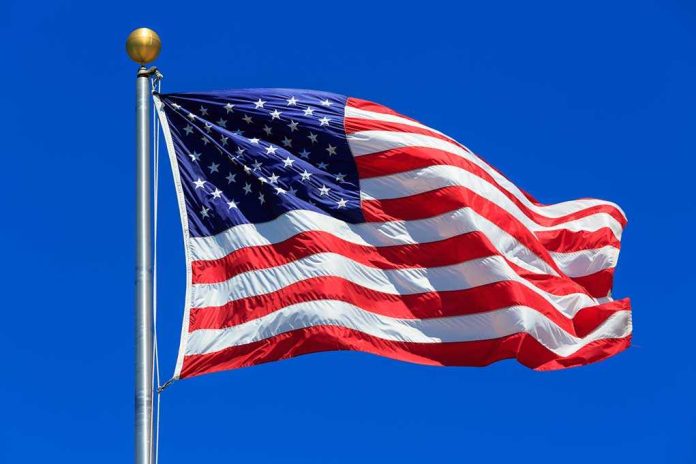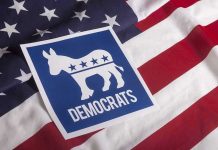
President Trump’s executive order to prosecute flag burning sets the stage for a direct confrontation over the First Amendment, reigniting debate about respect for national symbols and the very definition of free speech in America.
Story Snapshot
- Trump’s executive order mandates aggressive prosecution for flag desecration, including burning, and targets non-citizens with immigration penalties.
- The order challenges decades of Supreme Court precedent that protects flag burning as symbolic speech under the First Amendment.
- Supporters hail the move as a defense of patriotism and American unity; critics warn of constitutional overreach and inevitable legal battles.
- No immediate prosecutions reported, but legal and political tensions are mounting as agencies assess enforcement strategies.
Trump’s Executive Order: A Direct Challenge to Flag Desecration
President Trump signed an executive order instructing all federal agencies to prioritize prosecuting individuals who desecrate the American flag—including acts of burning—under existing criminal and civil statutes. The order also directs the Attorney General to refer cases to state and local authorities where appropriate, expanding the reach of enforcement. Additionally, it seeks to impose immigration consequences on non-citizens found guilty of flag desecration, directly linking the act to national security and public order. This move comes after a surge in flag burning incidents at protests, especially those tied to anti-Israel demonstrations and political unrest.
By explicitly targeting flag desecration for prosecution and linking it to immigration enforcement, the administration frames the issue as both a matter of national unity and public safety. Supporters assert that such measures are overdue, reflecting growing frustration among many Americans who believe the flag deserves greater legal protection and that past administrations failed to defend this core national symbol. The executive order is positioned as a necessary response to what the administration characterizes as hostile acts undermining American values and provoking division, with the intent to reestablish broad respect for the flag across the nation.
Legal Hurdles: Supreme Court Precedent and Constitutional Questions
The Trump administration’s directive immediately faces steep legal obstacles. The Supreme Court has twice ruled—first in Texas v. Johnson (1989) and then in United States v. Eichman (1990)—that flag burning is protected symbolic speech under the First Amendment. These decisions struck down previous attempts to criminalize flag desecration at both federal and state levels, cementing the act as constitutionally protected expression. Multiple legislative efforts to override these rulings have failed, as have state and local laws, which remain constrained by Supreme Court precedent. Legal experts widely agree that any move to broadly prosecute flag burners is likely to be struck down unless the act is tied to violence or incitement not protected by free speech.
While the executive order signals intent to expand prosecutable offenses, administration officials acknowledge the legal boundaries imposed by the courts. The Department of Justice and Department of Homeland Security are reviewing cases and exploring strategies, but as of August 25, no prosecutions under the new directive have been reported. Civil liberties organizations and constitutional scholars warn that implementing the order would invite immediate legal challenge, potentially setting the stage for another Supreme Court showdown over the scope of First Amendment protections.
Political and Social Impact: Dividing Lines and Community Response
Reactions to the executive order reflect deep divisions within American society. Supporters, especially those frustrated by what they see as years of leftist policies and declining respect for foundational symbols, praise the order as a long-overdue stand for patriotism and American unity. They argue that the flag’s desecration is not merely offensive but erodes the core values that bind the nation together, calling for robust action to deter such acts and protect national pride. This aligns with conservative priorities of restoring traditional principles and pushing back against perceived government inaction or overreach that undermines the Constitution and family values.
Critics, including civil liberties advocates and many legal scholars, counter that the order is a dangerous overreach, threatening free speech and setting a precedent for government suppression of dissent. They maintain that the Supreme Court has repeatedly affirmed the right to burn the flag as a form of political protest, cautioning that any attempt to punish such acts risks eroding fundamental rights and inviting costly litigation. The heightened focus on non-citizens and the linkage to immigration consequences adds another layer of controversy, igniting debate over equal protection and due process. The order’s long-term impact will likely depend on how agencies enforce its provisions and the courts’ willingness to revisit established precedent.
Prosecuting Burning of The American Flag – The White House. https://t.co/GQ9TRqz7bv
— Jan (@Jan502140524811) August 25, 2025
For now, the executive order has intensified the national conversation about patriotism, protest, and the limits of government power. With agencies reviewing enforcement strategies and civil liberties groups preparing for potential legal battles, the issue remains at the forefront of America’s ongoing struggle to balance respect for national symbols with the constitutional rights that define the nation.
Sources:
Fact Sheet: President Donald J. Trump Protects the American Flag from Desecration
Trump cracks down on flag burning with executive order
Trump’s Executive Order on Burning the American Flag Tests the Supreme Court’s Resolve
Trump cracks down on flag desecration with new executive order
Prosecuting Burning of The American Flag – The White House



